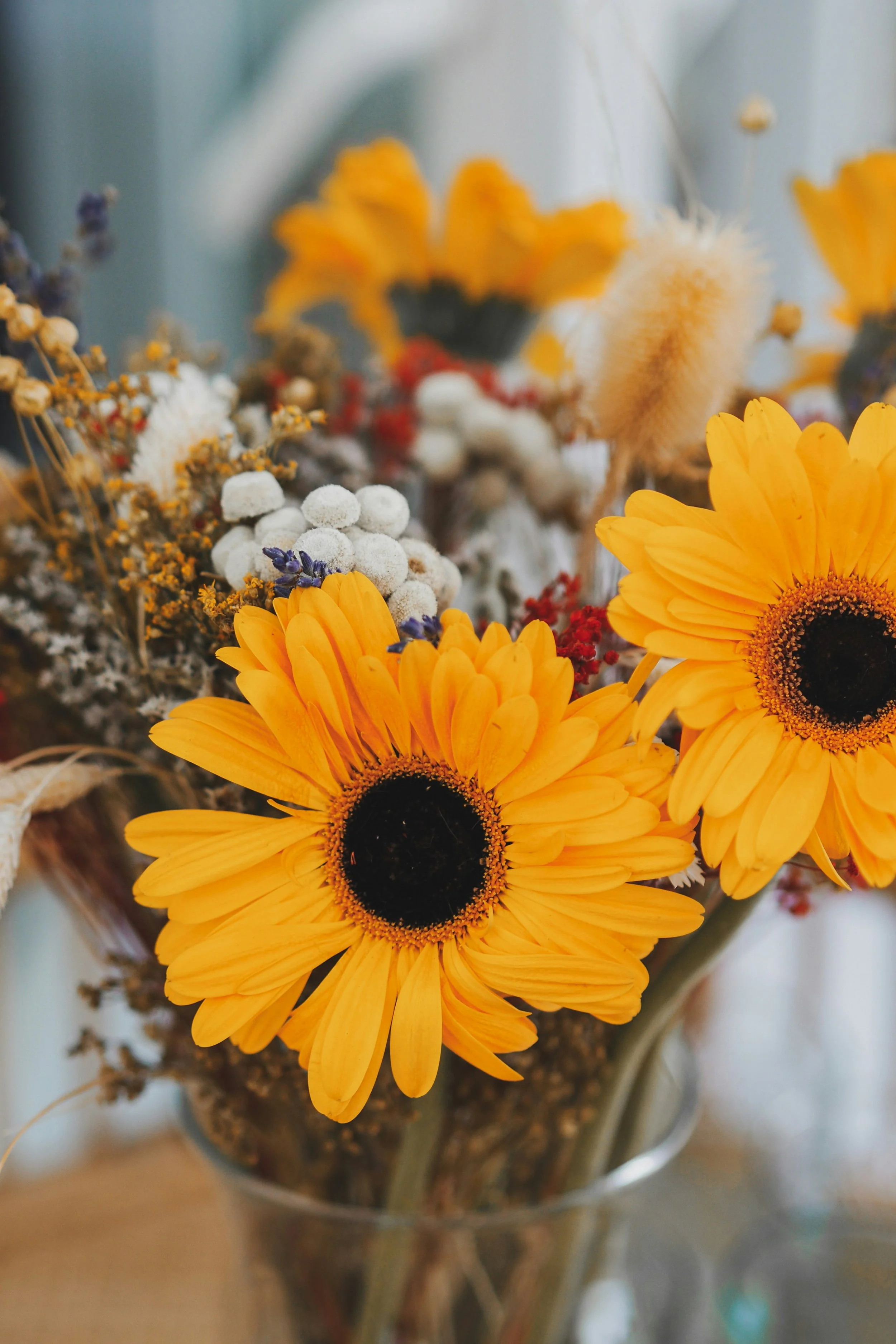Healing Blooms: The Best Flowers to Brighten Someone's Recovery
When someone you care about faces illness or injury, flowers become messengers of hope, carrying your concern across physical distance and emotional barriers. But not all blooms are created equal in their healing properties. The most therapeutic flowers combine visual beauty with psychological comfort, creating an environment conducive to both physical and emotional recovery.
The Psychology of Healing Flowers
Color psychology plays a crucial role in recovery environments. Soft pastels promote tranquility and rest, while gentle yellows and peaches encourage optimism without overstimulation. Avoid deep reds or intense purples, which can feel overwhelming to someone already dealing with physical stress. Instead, choose blooms that whisper rather than shout, offering comfort without demanding attention.
Champion Healers: The Most Therapeutic Blooms
Gerbera Daisies: The Mood Lifters These cheerful, face-like flowers are psychological sunshine in bloom form. Their simple, honest beauty lacks pretension while delivering powerful emotional impact. Available in gentle pastels and warm sunset shades, gerberas seem to smile at their recipients, making them impossible to ignore even during difficult recovery periods.
For the person receiving them, gerberas provide daily doses of joy without overwhelming fragrance that might trigger nausea or headaches. Their sturdy nature means they'll maintain their encouraging presence for weeks, offering consistent emotional support throughout the recovery journey.
White and Pink Roses: Elegant Encouragement While red roses speak of passion, white and pink varieties offer gentle support and admiration. White roses symbolize new beginnings and fresh starts—perfect for someone embarking on a healing journey. Pink roses express gratitude and grace, acknowledging the recipient's strength while offering tender encouragement.
These classic blooms carry cultural weight that transcends personal taste. Even those who don't typically appreciate flowers understand roses' significance, making them feel honored and supported by the gesture.
Sunflowers: Nature's Vitamin D Nothing captures hope quite like sunflowers, with their faces turned perpetually toward light. For someone confined indoors during recovery, sunflowers bring memories of summer days and open skies. Their bold, happy presence can single-handedly transform a sterile room into a more welcoming space.
The recipient benefits from sunflowers' natural ability to evoke memories of outdoor activities and future possibilities. These flowers seem to promise that brighter days lie ahead, providing essential psychological fuel for the healing process.
White Lilies: Serene Strength Oriental lilies offer sophisticated beauty with subtle fragrance that won't overwhelm sensitive individuals. Their elegant form provides visual interest without demanding constant attention, making them ideal for recovery environments where rest is paramount.
However, choose carefully—some lilies have intense fragrances that might be overwhelming. White Oriental lilies typically offer the perfect balance of beauty and restraint.
Arrangement Considerations for Maximum Healing Impact
Keep arrangements modestly sized but visually rich. A small bouquet that can sit comfortably on a bedside table provides more benefit than an overwhelming display that might feel burdensome to someone with limited energy. Choose vases with wide openings for easy water changes, as the recipient may not have assistance with flower care.
Consider the recipient's position—if they're bedridden, arrange flowers so they can be enjoyed from a lying position. The view from bed should include the blooms' most beautiful angles, providing visual pleasure throughout recovery.
The Therapeutic Ritual of Care
For the recipient, caring for get-well flowers provides gentle, manageable activity that can improve mood and self-efficacy. Simple tasks like adding water or removing spent blooms offer a sense of purpose and accomplishment during a period when many normal activities may be impossible.
This caring ritual also provides structure to potentially endless recovery days. The flowers' needs create gentle deadlines and small responsibilities that can help maintain cognitive engagement and emotional connection to the world beyond illness.
Long-Term Psychological Benefits
Recovery flowers often become powerful positive anchors in memory. Years later, the recipient may associate specific blooms with the love and support they received during vulnerability. This creates lasting emotional resources that can provide comfort during future challenging times.
For caregivers and loved ones, sending healing flowers provides a concrete way to express care when feeling helpless in the face of someone else's suffering. The act of choosing and sending appropriate blooms can ease the sender's own anxiety while ensuring the recipient feels supported and remembered.

